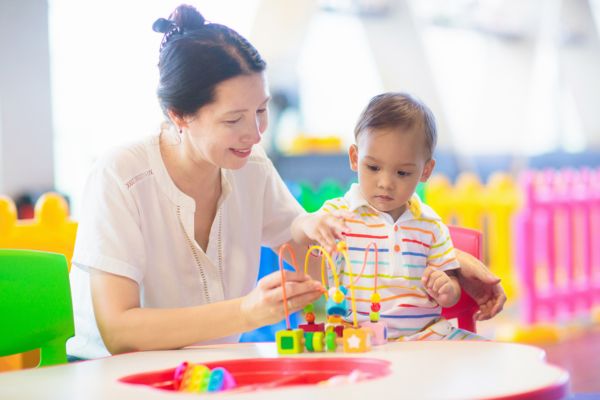
In the dynamic world of child care, effective communication is key to fostering a supportive and engaging environment. One powerful technique that child care professionals can use to enhance interaction and connection with children is sportscasting. Coined by early childhood educator Magda Gerber, sportscasting involves narrating children’s actions and behaviors in real-time, offering numerous developmental benefits. This technique is similar to parallel talk, where caregivers talk about what children are doing without direct interaction, allowing them to learn and grow in a social context.
What is Sportscasting?
Sportscasting involves the caregiver providing a play-by-play narration of what the child is doing, feeling, or experiencing at any given moment. For example, if a child is building a tower with blocks, the caregiver might say, “You’re stacking the blue block on top of the red one. Now you’re looking for another block to add to your tower.” This method is a key part of the RIE (Resources for Infant Educarers) approach, emphasizing presence, support, and allowing space for problem-solving.
Benefits of Sportscasting
1. Social-Emotional Development
Sportscasting helps children recognize and label their emotions, fostering emotional intelligence. For example, saying, “You look happy playing with the blocks,” or “It seems like you’re frustrated because the tower fell down,” validates their feelings and teaches them to express emotions appropriately. This technique also helps in conflict resolution, enabling children to see different perspectives and find shared solutions.
2. Language Development
By narrating actions and describing objects, caregivers introduce new vocabulary and language structures. This continuous verbal engagement helps children understand and use language more effectively. The benefits vary with age:
Babies and Toddlers: For infants, sportscasting can be simple descriptions of their actions, like “You’re holding the red ball” or “You’re crawling towards the toy.” This builds their receptive language skills and helps them associate words with actions and objects.
Preschoolers: For older children, sportscasting can include more complex language and observations about their social interactions, such as “You’re building a tall tower with those blocks, and you look proud of your work.”
Practical Examples of Sportscasting
Babies and Toddlers
Example 1: A toddler struggling to put on a coat might throw it down in frustration. Rather than doing it for them, you could say, “You got the zipper lined up and zipped halfway up. You’re getting stuck when the coat scrunches up at the 3rd button.” This helps them see the problem objectively and find a solution.
Example 2: During play, you might narrate, “You’re shaking the rattle and smiling. It makes a fun noise, doesn’t it?” This encourages them to continue exploring and engaging with their environment.
Preschoolers
Example 1: If two children are arguing over a toy, you might say, “Sam and Monica both want to play with the new virtual reality game. Right now, the timer shows you have 52 out of your 60 minutes left to play.” This helps them understand the situation and work towards a compromise without direct intervention.
Example 2: While observing a group activity, you could comment, “You’re all working together to build a big castle. Everyone is adding their own special part.” This reinforces cooperative play and highlights individual contributions.
Sportscasting is a powerful communication tool that, with practice, becomes second nature. It helps caregivers stay objective, support children in solving their own problems, and significantly aids in building their social-emotional and language skills. While this type of talk may feel awkward at first, caregivers incorporating sportscasting into daily routines can create a nurturing and enriching environment for children’s growth and development. Caregivers can utilize the Rayz Kidz curriculum and accompanying facilitation guides for examples and encouraging ways to use parallel talk while facilitating hands-on activities.